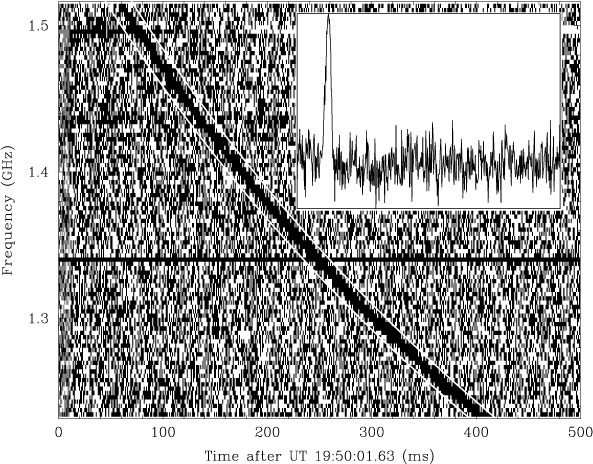SETI @ Home has developed a new way to search for signals.
SETI @ Home, the largest distributed project to search for extraterrestrial intelligence, has added a new algorithm for processing signals from deep space. The algorithm is called Astropulse (by reference - detailed scientific information)
Previously, in the framework of the SETI @ Home project, only narrow parts of the radio spectrum were analyzed in detail. For the Astropulse system, the signal comes from a telescope at the Arechibo Observatory, which scans a wider range of space and constantly changes direction. The task of the Astropulse algorithm is to search for short-term (minimum 0.4 microsecond) sharp pulses in a wide range of radio frequencies.
The change of the scientific paradigm is due to the fact that astronomers Duncan Lorimer and Matthew Bailes recently recorded a sharp burst of radio waves lasting 1 millisecond, which came, presumably, from a star cluster of 500 megaparks from Earth (more than 1 billion light waves). years old). A similar phenomenon was discovered for the first time. So, it turned out that such a signal has a fading nature, that is, its frequency decreases with time. To capture such signals, SETI @ Home had to change the way the spectrum was analyzed.
The graph shows the signal that Lorimer and Bales discovered. On the x axis, time is plotted, on the y axis, frequency. As you can see, the pulse frequency was reduced from 1.5 GHz to 1.2 GHz. Actually, this is exactly how scattered signals of this type should behave. That is why they cannot be detected by the same methods.
')

New development is not a replacement for the previous algorithm, it just complements it.
Previously, in the framework of the SETI @ Home project, only narrow parts of the radio spectrum were analyzed in detail. For the Astropulse system, the signal comes from a telescope at the Arechibo Observatory, which scans a wider range of space and constantly changes direction. The task of the Astropulse algorithm is to search for short-term (minimum 0.4 microsecond) sharp pulses in a wide range of radio frequencies.
The change of the scientific paradigm is due to the fact that astronomers Duncan Lorimer and Matthew Bailes recently recorded a sharp burst of radio waves lasting 1 millisecond, which came, presumably, from a star cluster of 500 megaparks from Earth (more than 1 billion light waves). years old). A similar phenomenon was discovered for the first time. So, it turned out that such a signal has a fading nature, that is, its frequency decreases with time. To capture such signals, SETI @ Home had to change the way the spectrum was analyzed.
The graph shows the signal that Lorimer and Bales discovered. On the x axis, time is plotted, on the y axis, frequency. As you can see, the pulse frequency was reduced from 1.5 GHz to 1.2 GHz. Actually, this is exactly how scattered signals of this type should behave. That is why they cannot be detected by the same methods.
')

New development is not a replacement for the previous algorithm, it just complements it.
Source: https://habr.com/ru/post/30220/
All Articles